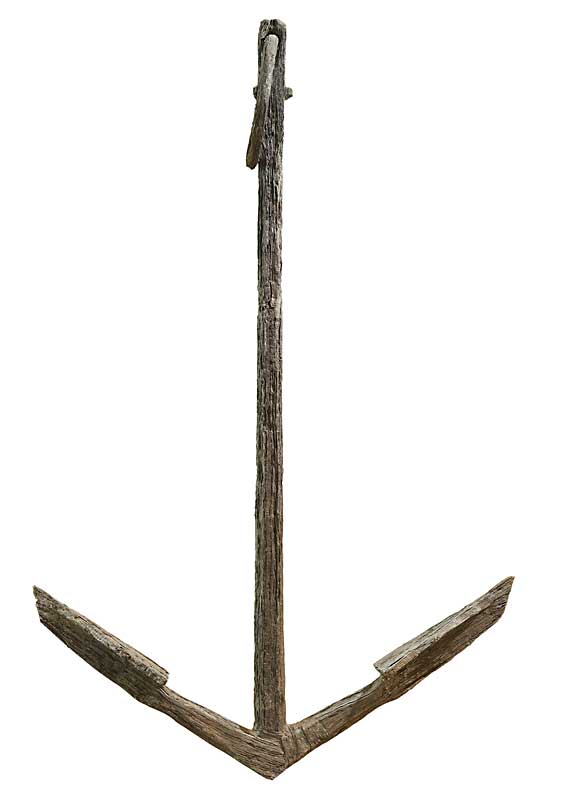 Anchor from the 'St Jean Baptiste'
Anchor from the 'St Jean Baptiste'
TLF ID R2034
This is a large anchor, made of wrought iron in about 1760. It is 4.45 metres long, 2.87 metres wide and 68 centimetres thick, and weighs 1400 kilograms. It is one of three anchors lost at Doubtless Bay in the north of the North Island of New Zealand on 27 December 1769 from the 'St Jean Baptiste', a ship captained by Jean de Surville, a French merchant and explorer.
